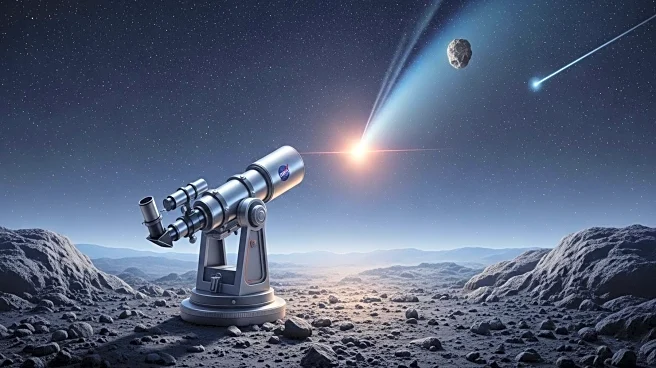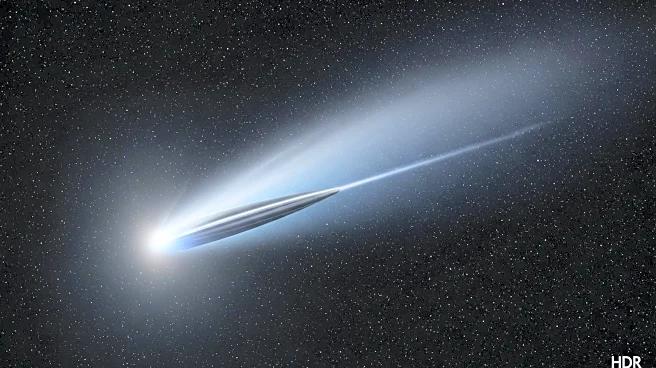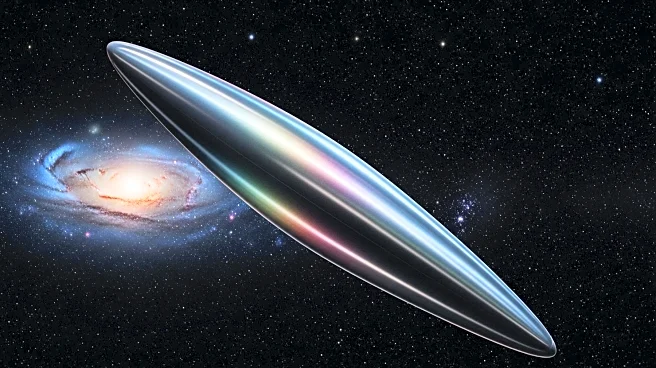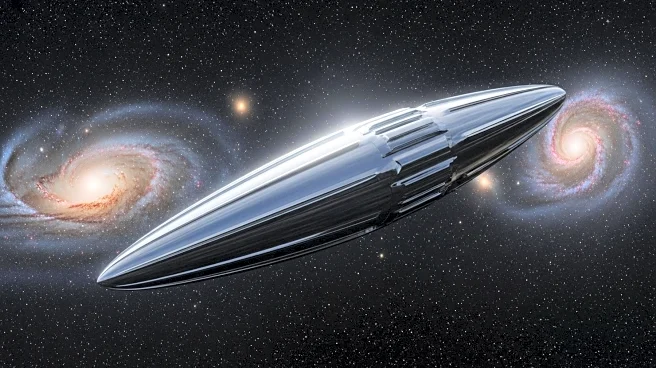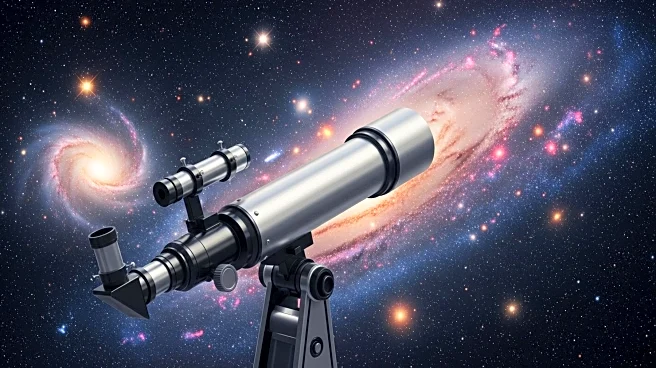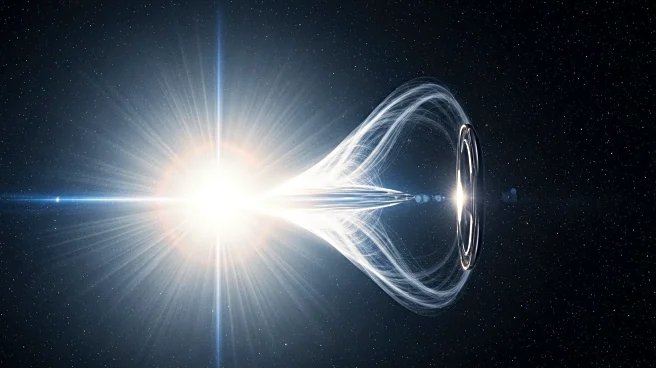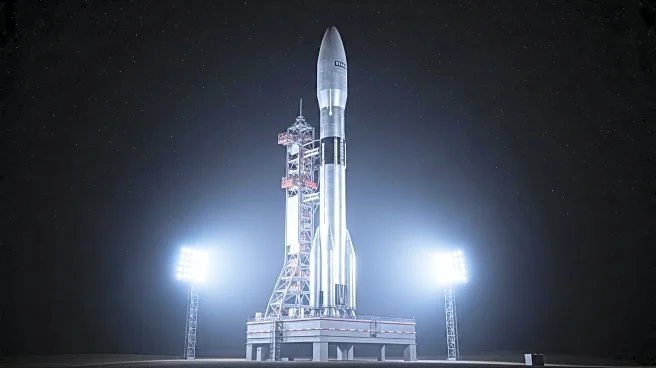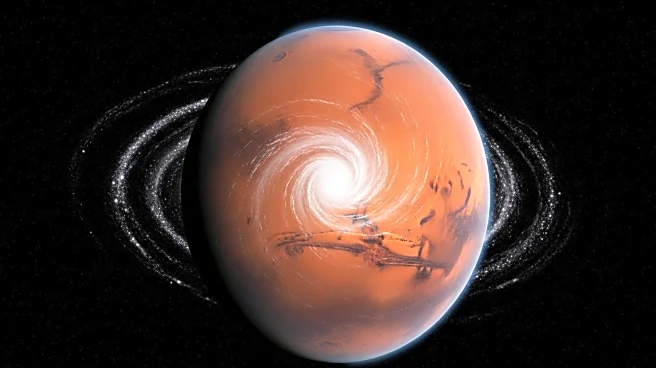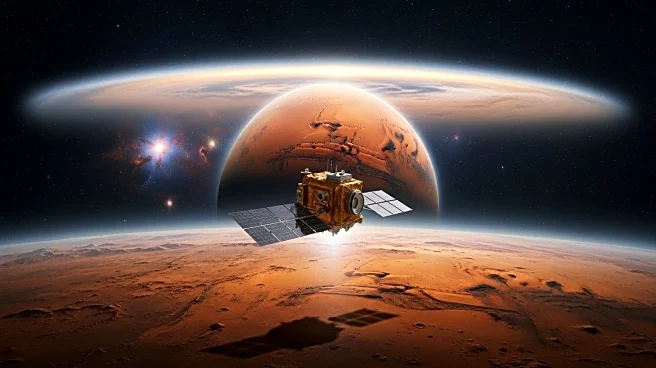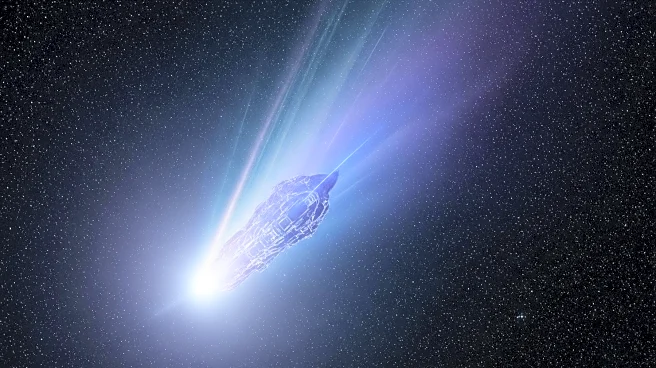What's Happening?
A new study has revealed that the interstellar comet 3I/ATLAS is significantly larger than previously thought, making it more massive than other known interstellar objects. The research, conducted by Richard Cloete, Peter Vere, and Harvard astronomer Avi Loeb, analyzed precise tracking data to determine the comet's size and non-gravitational acceleration. The findings suggest that 3I/ATLAS could be up to three miles long, with a nucleus diameter of roughly five kilometers. This makes it several orders of magnitude more massive than its predecessors, ʻOumuamua and Borisov. The study utilized optical measurements and data from the James Webb Space Telescope to estimate the comet's mass and size.
Why It's Important?
The discovery of 3I/ATLAS's anomalous mass challenges existing models of interstellar objects and raises questions about the composition and behavior of such bodies. The comet's size and trajectory suggest it may possess unique characteristics, prompting scientists to reconsider their understanding of interstellar space. The findings have implications for future research on interstellar objects, potentially influencing the development of new models and exploration strategies. The study highlights the importance of continued observation and analysis to uncover the mysteries of these distant objects, which could provide insights into the formation and evolution of planetary systems.
Beyond the Headlines
The study's findings have sparked debate among scientists, with some suggesting that 3I/ATLAS may be more than just a comet. Avi Loeb has proposed the possibility of the object being of technological origin, citing its unusual mass and trajectory. However, most experts maintain that the comet is a natural body, despite its intriguing properties. The debate underscores the need for further investigation and data collection to fully understand the nature of 3I/ATLAS. As the comet approaches Mars and Jupiter, additional observations may provide crucial information about its composition and behavior, potentially reshaping our understanding of interstellar objects.

